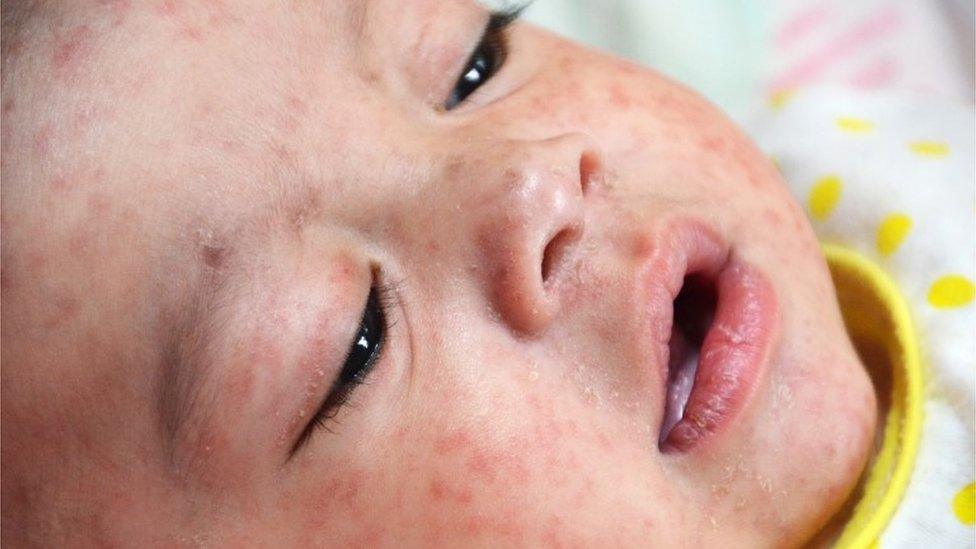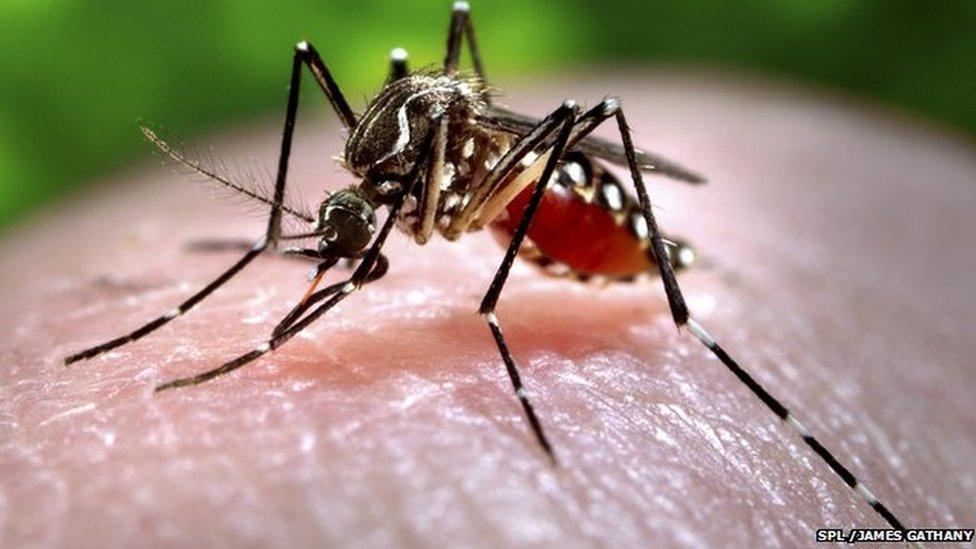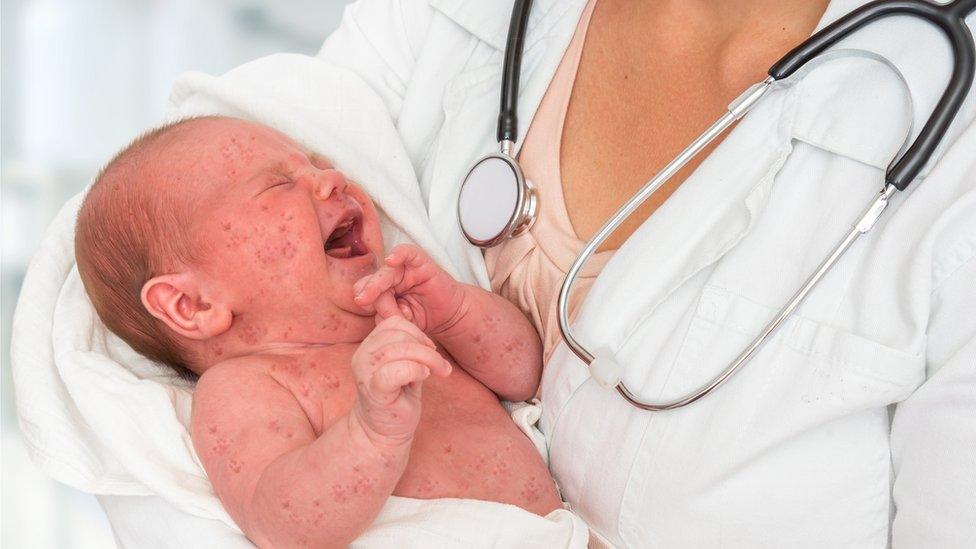Measles outbreak declared in Philippines
- Published

Measles can spread easily through coughs and sneezes
Authorities in the Philippines have declared an outbreak of the highly contagious measles virus in several areas including the capital, Manila.
As of 26 January there have been 1,813 measles cases and 26 deaths, according to the Department of Health Epidemiology Bureau. That is a 74% increase from 2018.
Measles can be very dangerous for small children and babies.
There is now increasing concern for the 2.4 million unvaccinated children.
Parents have been reluctant to have their children immunised at government health centres, after complications related to a dengue vaccine, Dengvaxia.
Dr Gundo Weiler, World Health Organisation (WHO) representative to the Philippines, said immunisation rates were well below the target of 95% and decreasing.
In 2016 the rate was about 75%, but fell to 60% in 2017 and has likely fallen further in 2018.
"In this scenario we have a pool of children building up over time who are not protected and who are susceptible to measles," Dr Weiler said.
Measles is a highly contagious airborne disease which spreads easily through coughs and sneezes. Initial symptoms usually include a fever, cough, runny nose and inflamed eyes. A red rash appears on the face and body a few days later.
Health Secretary Francisco Duque told local media that bronchopneumonia from measles complications can be deadly, and encouraged parents to bring their children for immunisation.
"Parents should not wait for complications to set in because it might be too late," he said.
"We are declaring an outbreak as cases have increased in the past weeks and to strengthen surveillance of new cases and alert mothers and caregivers to be more vigilant," Mr Duque said in a statement.
Initially the epidemic was only declared for Metro Manila and Luzon, but on Thursday the Department of Health expanded the outbreak area to include other parts of the Philippines.
- Published3 February 2018

- Published29 November 2018

- Published25 August 2018

- Published4 December 2017
